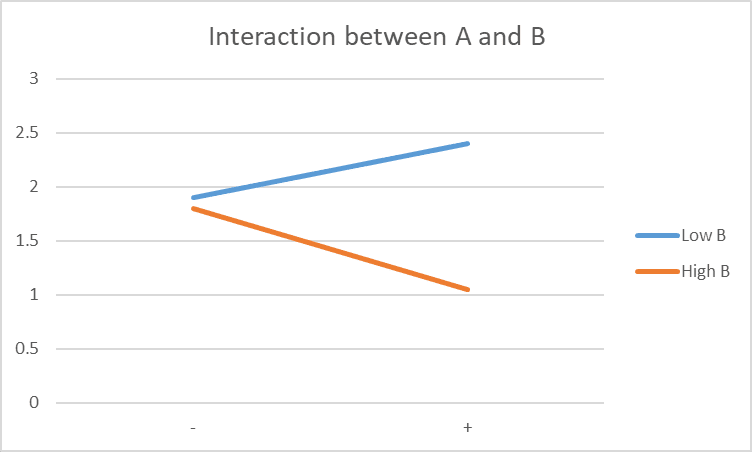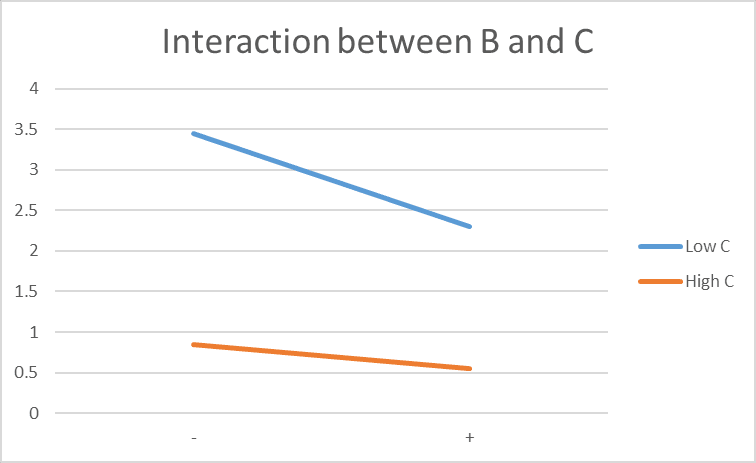Hello everyone, this entry will be about how I applied what I learned from the tutorial lesson into a case study that requires the use of Design of Experiment (DOE) 😆
CASE STUDY
What could be simpler than making microwave popcorn?
Unfortunately, as everyone who has ever made popcorn knows, it’s nearly
impossible to get every kernel of corn to pop. Often a considerable number of
inedible “bullets” (un-popped kernels) remain at the bottom of the bag. What
causes this loss of popcorn yield? In this case study, three factors were
identified:
1.
Diameter of bowls to contain the corn, 10 cm and
15 cm
2.
Microwaving time, 4 minutes and 6 minutes
3.
Power setting of microwave, 75% and 100%
8 runs were performed with 100 grams of corn used in every
experiments and the measured variable is the amount of “bullets” formed in
grams and data collected are shown below:
Factor A= diameter
Factor B= microwaving time
Factor C= power
|
Run order
|
A
|
B
|
C
|
Bullets
(grams)
|
|
1
|
+
|
–
|
–
|
3.75
|
|
2
|
-
|
+
|
–
|
2.75
|
|
3
|
–
|
-
|
+
|
0.74
|
|
4
|
+
|
+
|
-
|
1.75
|
|
5
|
+
|
–
|
+
|
0.95
|
|
6
|
+
|
+
|
+
|
0.32
|
|
7
|
–
|
+
|
+
|
0.75
|
|
8
|
–
|
-
|
-
|
3.12
|
Next, I will be going through the full and fractional factorial that I have created on the template given.
Full Factorial
Based on the pictures above,
Factor A:
The mass of bullets decreases by 0.15g from 1.84 to 1.6925g as the diameter changes from low(10cm) to high(15cm)
Factor B:
The mass of bullets decreases by 0.75g from 2.14g to 1.3925g as the power setting of the microwave increases from low(4min) to high(6min)
Factor C:
The mass of bullets decreases by 2.15g from 2.84g to 0.69g as the power setting of the microwave increases from low(75%) to high(100%)'
Based on the graph, which factor do you think has the biggest significance?
If your answer is C, B, A...then you are correct! 😆
C has the largest significance due to the highest gradient difference(steepest) which resulted from a large difference.
A has the smallest significance due to the lowest gradient difference(more gentle gradient) which resulted from a smaller difference.
B has the gradient difference between A and C which is why it is in the centre of the rankings.
Next I will be going through the interaction between two factors
First interaction is between A and B
With reference to the plot, High B has a negative gradient while Low B has a positive gradient. However, as both lines
do not intersect, there is
no interaction between A and B
Second interaction is between A and C
With reference to the plot, Low C and High C are parallel to each other with a gentle negative gradient. Because it is parallel, there is
no intersection of the two lines and thus there is also
no interaction between A and C
Last interaction is between B and C
With reference to the plot, both Low C and High C have negative gradients, Low C is steeper than Low B. However, as both lines do not intersect, there is no interaction between B and C
Click
here to view the
excel sheet
Next up is Fractional Factorial
According to the graph and the table above,
Factor A:
The mass of bullets increases by 0.29g from 1.75g to 2.035g as the diameter changes from low(10cm) to high(15cm)
Factor B:
The mass of bullets decreases by 0.71g from 2.25g to 1.535g as the power setting of the microwave increases from low(4min) to high(6min)
Factor C:
The mass of bullets decreases by 2.72g from 3.25g to 0.53g as the power setting of the microwave increases from low(75%) to high(100%)
Now, which factor do you think has the biggest significance?
If your answer is C, B, A then you're right!
C has the largest significance due to the highest gradient difference(steepest) which resulted from a large difference.
A has the smallest significance due to the lowest gradient difference(more gentle gradient) which resulted from a smaller difference.
B has the gradient difference between A and C which is why it is in the centre of the rankings.
Click
here to view the
excel sheet
Reflection 💭
To be honest, this topic was pretty confusing at first, but I managed to grasp it and I am confident in applying DOE in any practical/experiment now when analysis of the factors is required. This topic is completely new and as chemical engineers, we were not exposed to such a concept as this is commonly used in a small scale laboratory experiment. However, I am also grateful that we learned this because not only does it expand my repertoire, it is commonly used in the industry when conducting a small scale experiment to analyze the different factors with relation to an experiment.
There is also a practical to apply this concept and it was pretty fun, even though we had to do 64 runs, I am thankful that the scenario given is quite fun because we had to play around with catapults. With this experiment, it has reinforced the steps that I need to take to make the Design of experiment successful.










Comments
Post a Comment